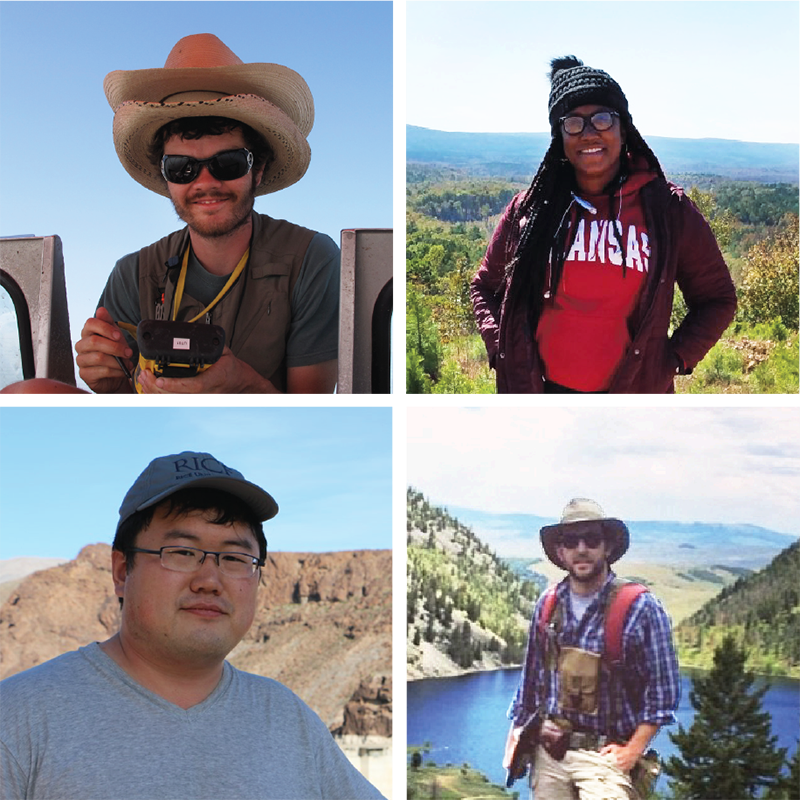
In “Atchafalaya,” John McPhee’s essay in the 1989 book The Control of Nature, the author chronicles efforts by the U.S. Army Corps of Engineers to prevent the Atchafalaya River from changing the course of the Mississippi River where they diverge, due to the Atchafalaya’s steeper gradient and more direct route to the gulf. McPhee’s classic essay proved inspirational to John Shaw, an assistant professor of geosciences who called it “a foundational text.”
Indeed, his latest work adds to the story.
In a recent paper published in the American Geophysical Union’s journal, Water Resources Research, Shaw and his fellow researchers, Kashauna G. Mason, Hongbo Ma and Gordon W. McClain III, examine the critical period before the decision was made in 1950 to create a river control system at the junction of the two rivers to get a clearer understanding of the rivers’ natural state – and how regulation might be fine-tuned moving forward to preserve Louisiana coastlands.
The paper, Influences on Discharge Partitioning on a Large River Delta: Case Study of the Mississippi-Atchafalaya Diversion, 1926–1950, seeks to resolve lingering questions about the rate at which the Atchafalaya River captured water from the Mississippi River and the degree to which it would have changed the course of the river.
“You basically have two conduits to the ocean, and you can think of them as competing for water and sediment. You’ve got the Mississippi and the Atchafalaya — anything to widen or grow one branch will pull more water from the other,” Shaw said. “More and more water was going down the Atchafalaya, so that was what everybody focused on.”
By looking at old Army Corps of Engineers surveys, McCain and Mason were able to painstakingly digitize more than 100,000 data points, bringing historic measurements into the modern field. From this, Ma and Shaw were able to model the hydrodynamic flow through the channel network.
An unexpected finding was that while the Atchafalaya was widening, increasing its flow, the Mississippi was widening, too, just not as fast the Atchafalaya. “That’s really interesting,” Shaw explained, “because I think most people assumed the Mississippi was shrinking simply because the Atchafalaya was expanding.” In short, the situation may not have been as dire as initially thought.
Ultimately, the team found that erosion of the upper Atchafalaya accounted for about 73 percent of the increased water flow, while dredging of the lower part of the river accounted for the remainder, meaning the increased flow was a product of both natural and man-made forces. While man-made controls on the flow are secondary, they weren’t properly understood at the time McPhee wrote “Atchafalaya.”
Why is this important to know?
As Shaw explains it, Louisiana is slowly being submerged due to rising sea levels and human impact on the river system. Billions of dollars are being spent to prevent that from happening.
The Atchafalaya-Mississippi Diversion is the linchpin to controlling where water and sediment go, whether down one river or the other, and determining which marshes will be nourished by sediment. Hundreds of megatons of sediment come down the Mississippi every year, and if more goes down the Atchafalaya, that impacts the Mississippi and the coastline it shapes.
The ultimate goal of the research is to better understand how these rivers are being regulated and what would happen in the absence of regulation. By focusing on the years between 1926-1950, Shaw and his team are seeking to find a clearer picture of what the river looked like before regulation began — and how it might be fine-tuned moving forward. This research was funded by a Department of Energy grant to understand river channel dynamics along coastlines.
Now that the paper is done, Shaw wants to send a copy to McPhee, a professor emeritus at Princeton. “I just want to let him know this was inspired by him,” he said, “maybe not written so well, but it updates the story he broke to the world in the 80s.”
About the University of Arkansas: As Arkansas' flagship institution, the U of A provides an internationally competitive education in more than 200 academic programs. Founded in 1871, the U of A contributes more than $2.2 billion to Arkansas’ economy through the teaching of new knowledge and skills, entrepreneurship and job development, discovery through research and creative activity while also providing training for professional disciplines. The Carnegie Foundation classifies the U of A among the top 3% of U.S. colleges and universities with the highest level of research activity. U.S. News & World Report ranks the U of A among the top public universities in the nation. See how the U of A works to build a better world at Arkansas Research News.
Topics
Contacts
John Shaw, associate professor
Geosciences
(479) 575-7489, shaw84@uark.edu
Hardin Young, assistant director of research communications
University Relations
479-575-6850,
hyoung@uark.edu